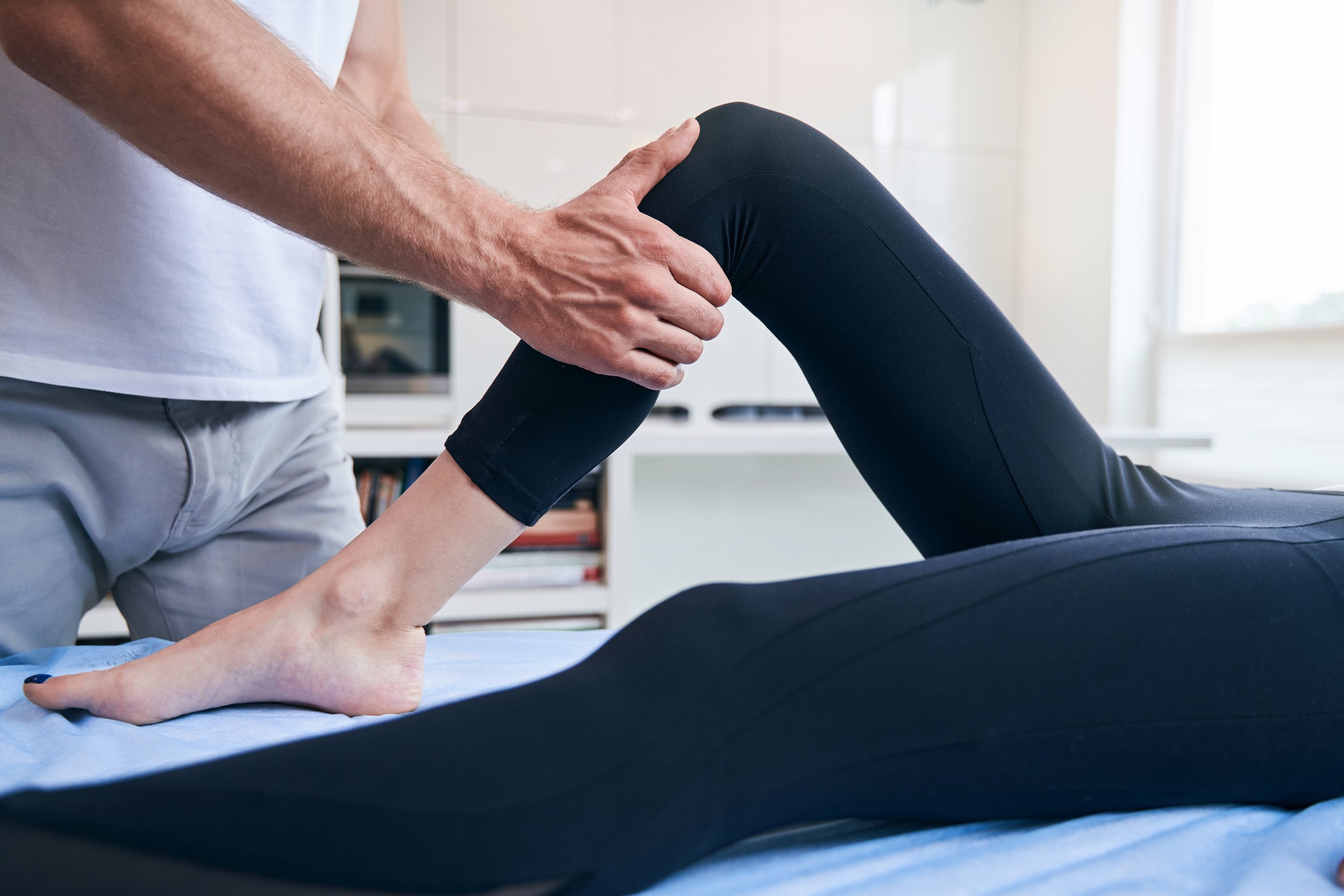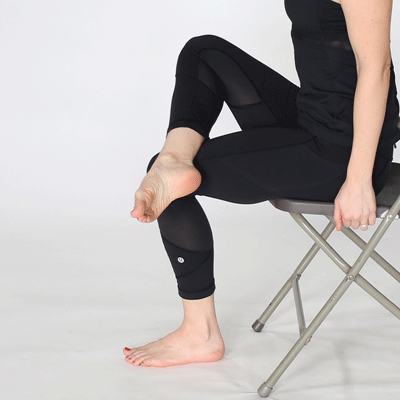The 7 Best Exercises To Reduce Varicose Vein Symptoms
Ever wondered about those spidery-looking veins that some people have on their legs? They are called varicose veins, known more formally as chronic venous insufficiency, and can have a wide reaching impact on those affected by them.
Varicose veins affects the legs, causing swelling, skin changes, and even pain in the various stages of the condition. If left untreated, varicose veins can lead to more serious issues like venous ulcers. All these symptoms can impact work performance, socialising, and ultimately quality of life.
Keep reading to learn more about varicose veins, what causes them, and how they are treated and managed with the help of doctors and physical therapists.
Varicose Veins – What Exactly Are They?
Varicose veins is a chronic condition where the veins in the lower limbs become dilated and distorted veins as a result of chronic venous insufficiency. This condition affects up to 30% of the adult population, largely in older adults.
Some of the risk factors for varicose veins include inactivity, prolonged standing, age, genetics, and family history. Lifestyle and general physical activity may also impact the formation of varicose veins.
What Causes Varicose Veins?
Varicose veins causes include chronic venous insufficiency which occurs when the valves that normally help return blood back to the heart from the legs fail. This results in “retrograde flow” or pooling of the blood in the various branches of the affected veins in the legs. As a result of this poor circulation, it leads to abnormal pressure in the veins and an array of different symptoms.
Varicose Veins Symptoms
The main symptom of varicose veins is distorted and enlarged veins in the lower legs. Other symptoms can also include:
Redness or swelling in the legs
Discoloration of the skin, known as hyperpigmentation
Aching or pain, particularly after standing for prolonged periods
Cramps
Delayed wound healing
Ulcers
Varicose Veins Treatment
Varicose veins are a chronic condition that can progressively worsen over time. Timely and efficient treatment is vital to delay symptom progression and prevent complications. Treatment for varicose veins can include medical, surgical, and physical therapy treatments.
Medial Treatment For Varicose Veins
It’s important to get diagnosed by a medical professional before starting any treatment. This ensures the right diagnosis is made and helps with choosing the best treatment for the symptoms. Some of the medical interventions for varicose veins may include:
Compression stockings for varicose veins: While compression stockings can be an effective treatment for varicose veins, they are often uncomfortable and time consuming to wear. Therefore, this treatment often has poor compliance.
Medications: Doctors may prescribe certain medications to help with symptoms like skin rashes.
Monitoring: The doctor can also monitor for any changes over time, a critical part of managing varicose veins to prevent complications.
Surgical Treatment For Varicose Veins
During a consultation with a surgeon, the surgeon may recommend the following interventions for varicose veins:
Sclerotherapy: This involves injecting specialised medication (sclerosants) locally into the affected veins. This can take several weeks to be effective and clear up, depending on the extent of the varicose veins.
Phlebectomy: Phlebectomy is a procedure which involves removing the superficial varicose veins – or the veins closest to the skin – in order to address the varicose veins.
Surgery: Surgery for varicose veins can include ligation and stripping which ties up the vein and removes them so that the failed vein is no longer causing problems to the greater venous network.
Laser or “ablation” therapy: Mainly used for small spider veins, laser therapy involves targeting specific areas with a laser to treat the abnormal veins.
As with all types of treatment, there can be side effects of these invasive procedures and the results are not always consistent. It’s important to talk to health professionals about which treatment option may be the most suitable and effective.
Physical Therapy Treatment For Varicose Veins
After getting a diagnosis of varicose veins, physical therapists can be integral to effectively managing the condition. Conservative (non-surgical) treatments for varicose veins with physical therapy can include:
Compression: Physical therapists are often involved in the process of fitting and ensuring compliance with compression stockings.
Lifestyle modifications: Education is a major part of managing a condition like varicose veins. This can include information and resources on maintaining a healthy diet, selecting appropriate footwear, and addressing any risk factors for complications like obesity.
Regular activity: Physical activity is an important component of maintaining normal blood flow in the body and legs. A physical therapist can help with implementing an exercise routine that includes activities like walking or resistance exercise.
Specific exercises: Physical therapists may also prescribe specific exercises for patients with varicose veins.
The Seven Best Exercises For Varicose Vein Relief
Exercise can help improve circulation and therefore the symptoms of varicose veins. After seeing a physical therapists, they may recommend the following exercise to help manage varicose vein symptoms:
1. Foot Pumps
Start in a comfortable sitting position.
Flex your ankles upward, pointing toes toward your body.
Then, point your toes away from your body.
The physical therapist may recommend starting with just 10 repetitions, and then increasing depending on progress and tolerance.
2. Ankle Circles
Start in a comfortable sitting position.
Rotate your foot around in a circle.
Repeat in the other direction.
Aim for 10-15 circles in either direction.
3. Calf Raises
Stand with your feet flat on the ground, hip-width apart.
Rise onto your toes, lifting your heels as high as possible.
Hold for a moment, then slowly lower back down.
Repeat 10-15 times.
4. Leg Raises
Lie flat on your back with legs straight.
Lift one leg slowly off the ground, keeping it straight.
Hold for a few seconds, then lower it back down.
Repeat with the other leg.
Aim for 10-15 repetitions on each leg.
5. Marching
Stand tall with your feet shoulder-width apart.
Lift one knee up to about 90 degrees, then lower it back down.
Repeat with the other leg, alternating in a marching motion.
Aim for 20-30 marching steps.
6. Cycling (stationary)
Adjust the seat to a comfortable height.
Pedal at a moderate pace, ensuring a full circular motion with each revolution.
Aim for 5-10 minutes of cycling to start, gradually increasing duration as tolerated at the direction of the physical therapist.
7. Walking
Walking is one of the best ways to activate the calf muscle pump, which helps circulate the blood flow in the legs back to the body. The physical therapist can ensure proper posture and stride length. They may use an indoor treadmill to progress the exercise by incorporating an incline or changing the speed.
Book Now
When To Worry About Varicose Veins
If you’re worried about your varicose veins, if the symptoms are bothering you, or you notice complications like poor healing or ulcers, don’t hesitate to seek medical input. The symptoms of varicose veins can also be symptoms of other conditions such as blood clots, infection, and tumours. Any unusual, persistent, or severe symptoms should be assessed by a doctor.















